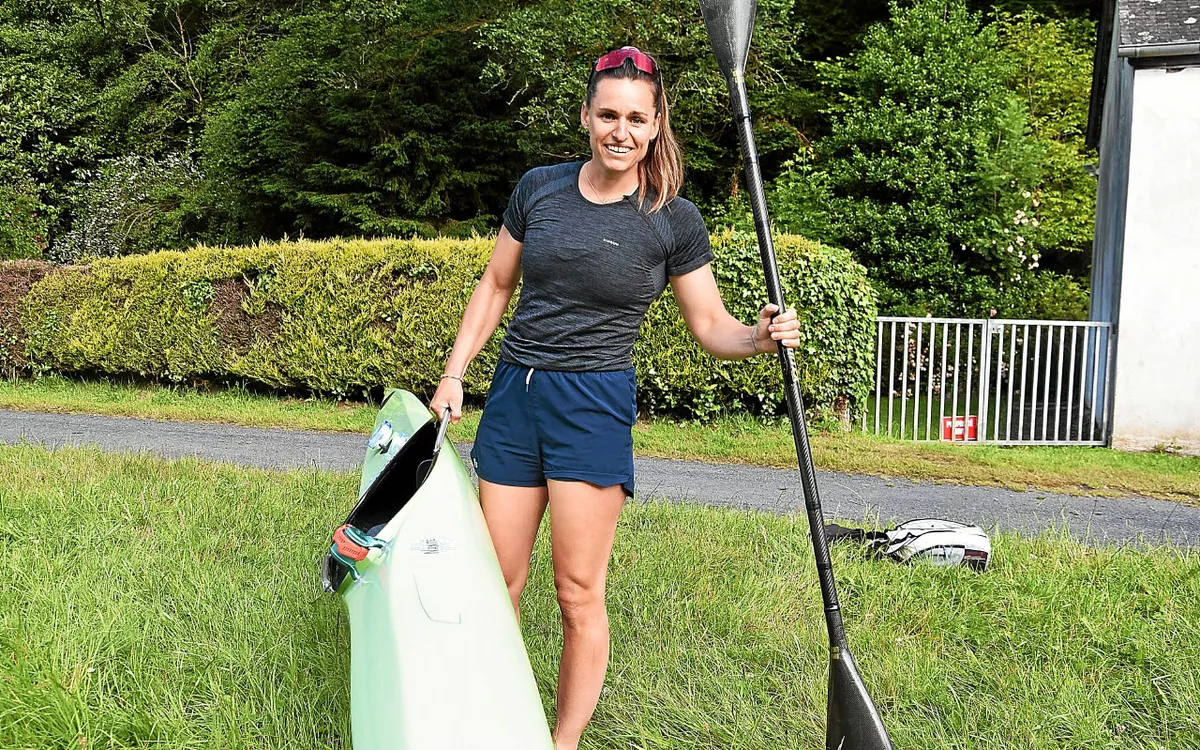Léa Jamelot: I’ve had it for a while, but it wasn’t the right timing. It was born because I discovered kayaking on the canal and told myself that one day, we would have to go and meet it from end to end. It accelerated with my non-selection for the Paris Games. I needed a challenge for 2024. And in fact, I really felt like I was experiencing my Olympic Games. The project gained momentum with the idea of a film for TV, hence its postponement to 2025.

How did you prepare for this challenge?
I started preparing for it in Australia, in January 2024. I opened Google Maps to imagine how many days I could do it, discovering the 237 locks. The canal is 364 kilometers online, but I actually traveled 420 kilometers to Brest. Then, I made a list of places to discover, and I made the first phone calls to find out if it was navigable.
Have you discovered areas that were no longer really practiced?
Yes, some reaches are no longer in water or are covered with algae, and there are also very short reaches. In the lock ladders it is better to walk. Which I did. My biggest day was in Pontivy: nine hours in motion, with 48 locks! Otherwise, it was an average of 5 hours of navigation per day, at a hiking pace.

This project has generated a lot of interest…
I was hoping for enthusiasm, but not as much. People came to see me pass. There were plenty of welcoming committees organized by the municipalities. It grew in intensity, because the first video was a hit on Instagram. I was impressed by the very warm welcome. The adventure was a pretext to highlight these territories, these people and this canal. I prepared this adventure with heart and experienced it with pleasure. The objectives of bringing together the kayaking family and the canal family, of taking the time to share, it really happened and it was great.
In what conditions did the filming take place?
It was a huge challenge. The team was capturing in real time. On the first part, we had a boat. The web series editor collected the SD cards and edited the episodes in real time to broadcast them on D + 2. I recorded the voice-overs between two locks. It was a big success to be able to release all 15 episodes on time.

Was the film project imagined from the start?
We had it in mind, but TV rejected it because it was considered too “magazine”. We focused on the episodes. We wanted the film to be designed for cinema, with a different rhythm. The 55-minute format is very short to tell the story of 15 days of descent and 420 kilometers. We had to make choices to develop the canal’s issues and offer new images.
Are you satisfied with it?
Yes. The post-filming stage was intense. We are behind schedule, especially since TV has shown interest in another film, “Léa, la vie d’après”, which is also coming out in December on France 3 Bretagne. This will discuss my thoughts on the continuation of my career after the Olympics. These two films are very complementary.

How will Thursday evening in Carhaix work out?
I will be there to introduce the screening. Then there will be a question-and-answer session. I suggest continuing discussions on the adventure and collecting the opinions of those present on the future of the canal. I look forward to continuing the discussions around the canal this Thursday evening. In all, around fifteen screenings are planned in Brittany and Loire-Atlantique until the end of November.
Practical
Screening of the film “Léa de Nantes à Brest” (55 mins), Thursday October 23, at 8 p.m., at the Grand Bleu.



